– and other fruits
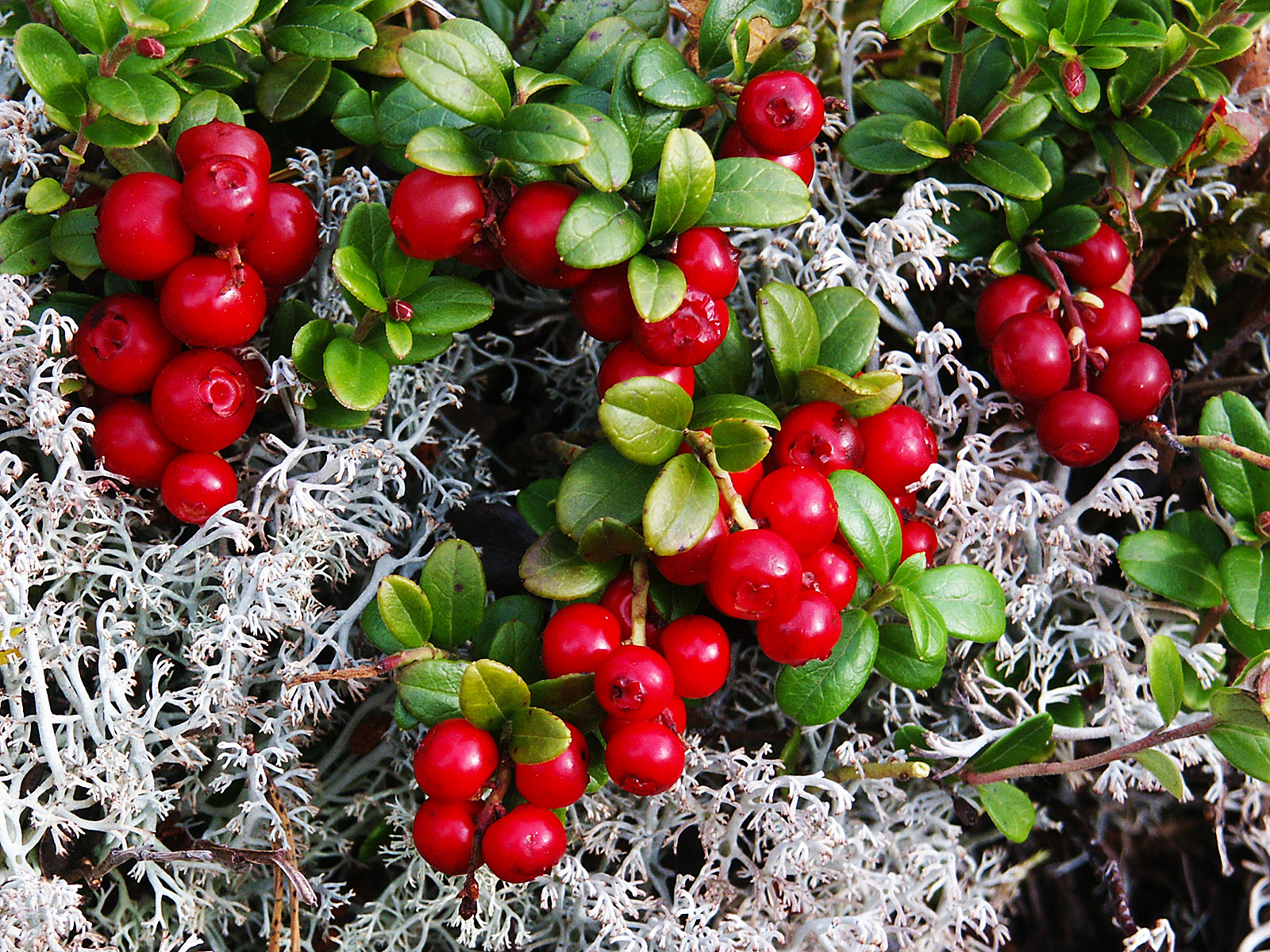
Cowberry, Foxberry, Mountain cranberry, and supplied by Swedish immigrants in America: Lingberry, Lingenberry, Lingonberry (Vaccinium vitis-idaea). The only berry worth picking. Well, that's my opinion, and actually quite a few other's.
(2005-09-23)
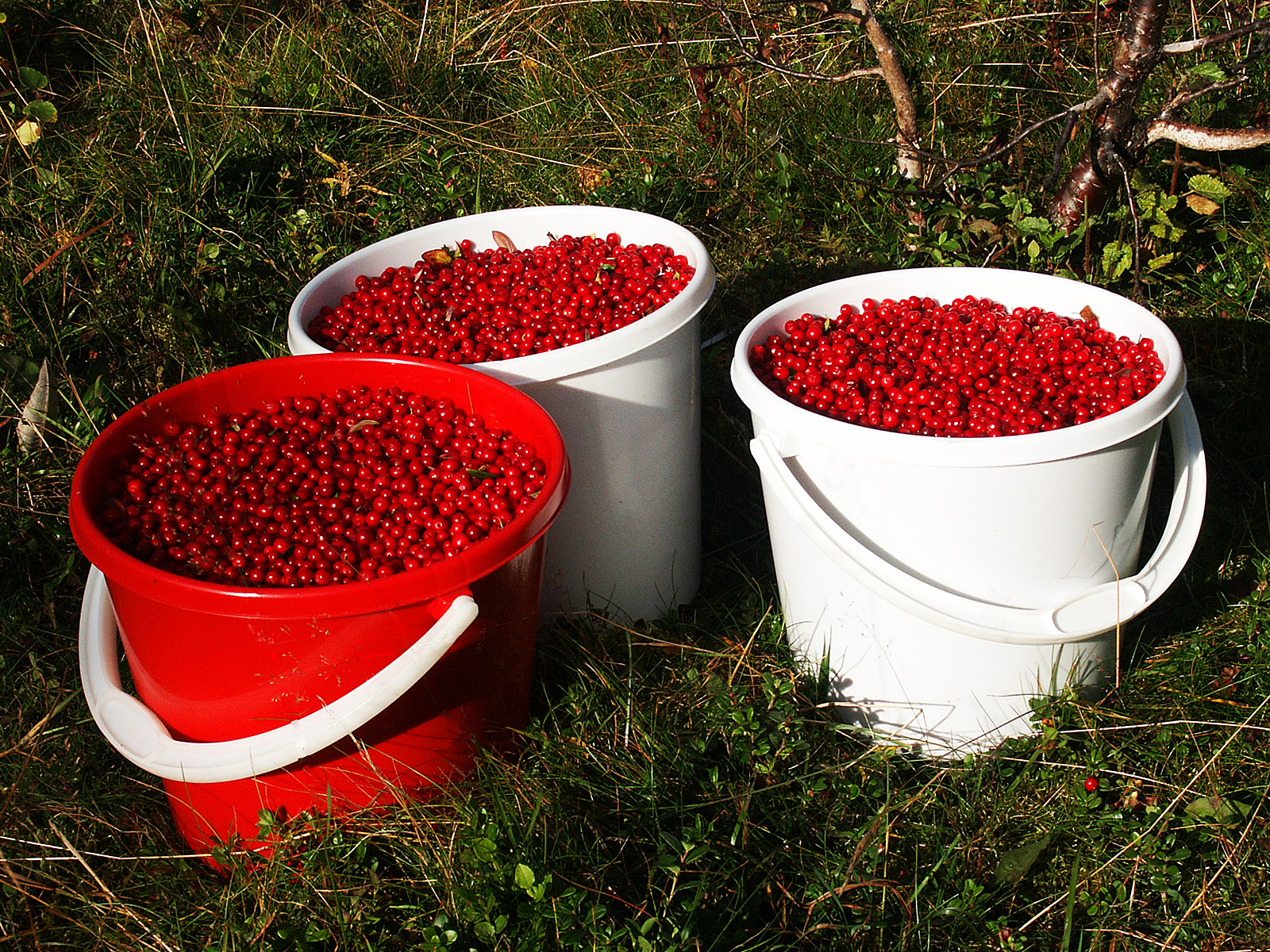
Foxberries are used for jam, boiled with sugar or just crushed with sugar and preserved by freezing. Preferably the boiled type is eaten in small quantities with some meat and gravy dishes, notably traditional game meat dishes. The berries contains a lot of benzoic acid and is therefore to some extent self conserving. Thus we may pick last years berries in spring and they usually taste okay, although different.
(2005-09-24)

Blueberries (Vaccinium myrtillus) is also a popular berry. Their taste varies from sour to nearly sweet and the colour varies from light to dark blue, the dark ones are sweetest. If you pick them and eat them, your fingers, your lips and your teeth will become quite blue, but the colour is easily washed off. The blueberries on the picture grow in an area where we rarely pick them. The altitude is more than a thousand metres and here berries ripen only some summers. This year Blueberries, Foxberries, Black crowberry (Empetrum nigrum) and Bog blueberry (Vaccinium uliginosum) were ripe at the same time on this site. And the blueberry leaves have got their red autumn colour, in some places making the whole hillside red.
(2014-09-15)
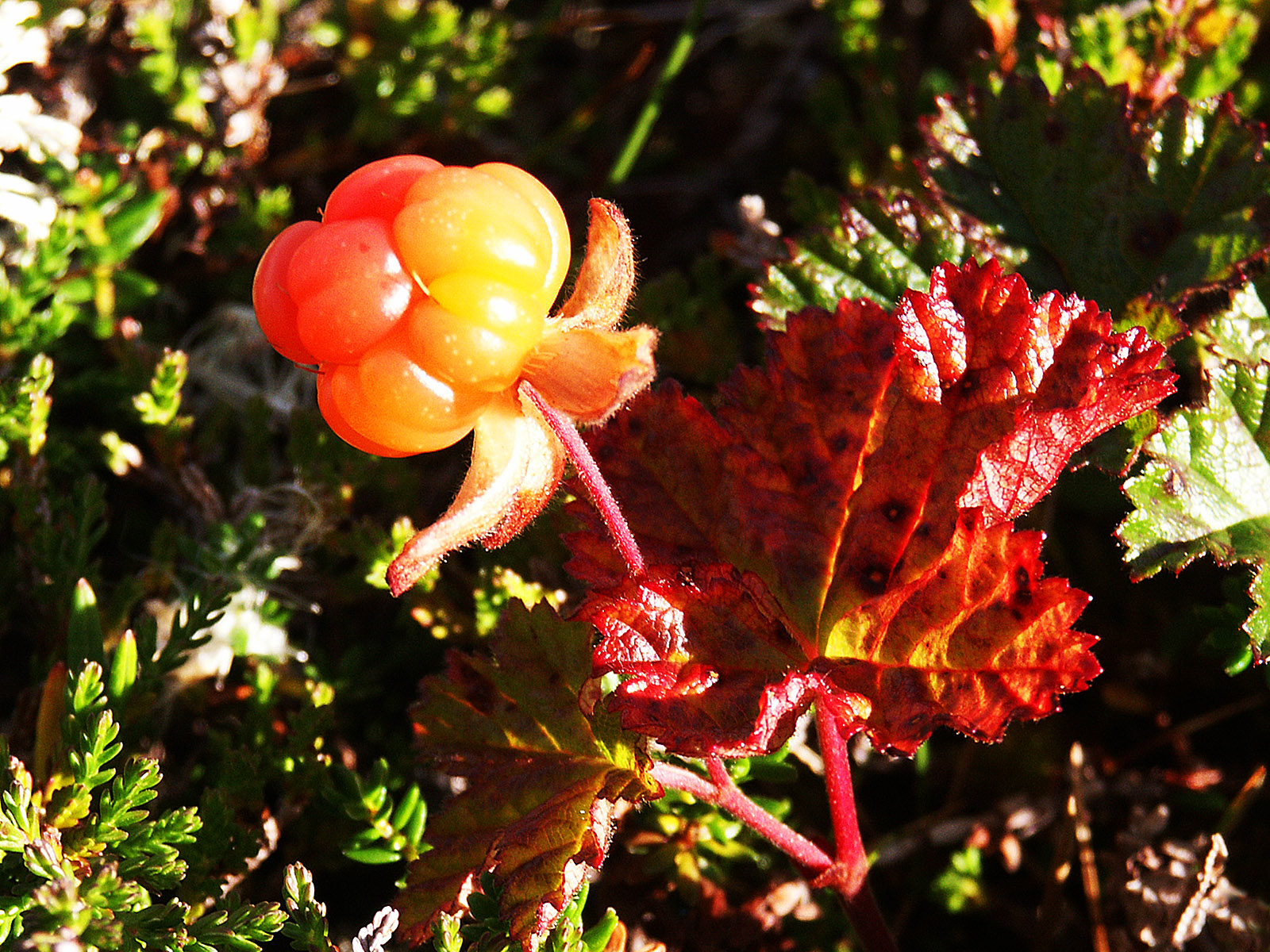
Cloudberry (Rubus chamaemorus) has the reputation of being a delicacy of the North. They grow on acidic soil all over the country, mainly in the lower highlands and on open wetland at lower altitudes. In this country we are allowed to pick wild berries (and mushrooms) anywhere except on cultivated land, but there is an exception for cloudberries in the northern part of the country, where they are of economic importance to many people. You may pick and eat them, but not bring a bucket. And if I may voice my opinion; nobody could make me eat cloudberries every day of the year. But we usually have them for dessert on Christmas Eve or on New Year's Eve.
(2005-08-21)

Woodland or wild strawberries (Fragaria vesca) taste differently from the big cultivated ones, and I would claim that they taste best just before they has turned completely red. You may find them almost everywhere, but only in a few places they are really abundant.
(2009-06-28)
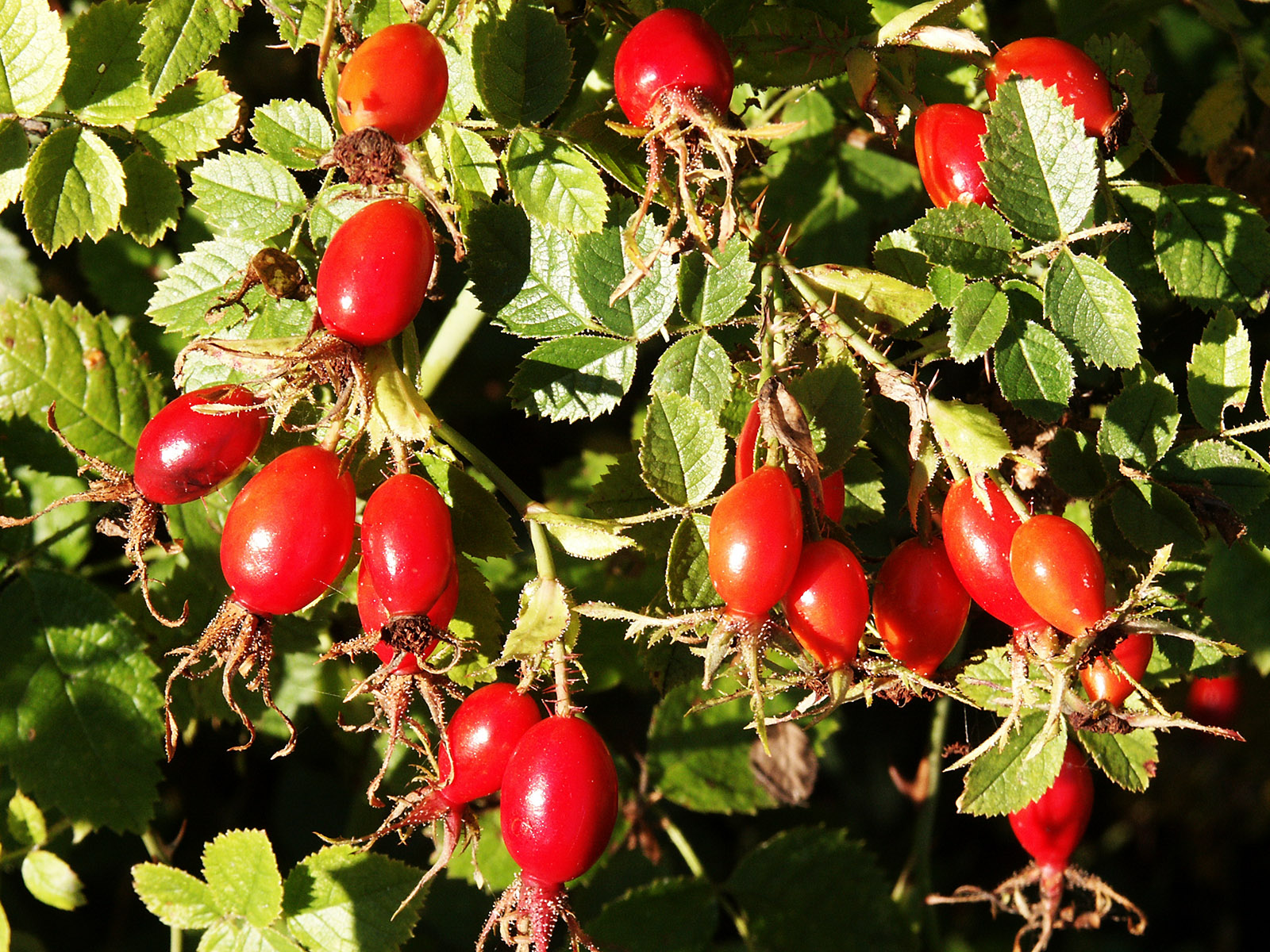
Hips, fruits of a briar (or some rose bushes). Where I grew up in Norway, people call those thorny bushes "klunger", which easily translates as "clinger".
(2006-10-18)
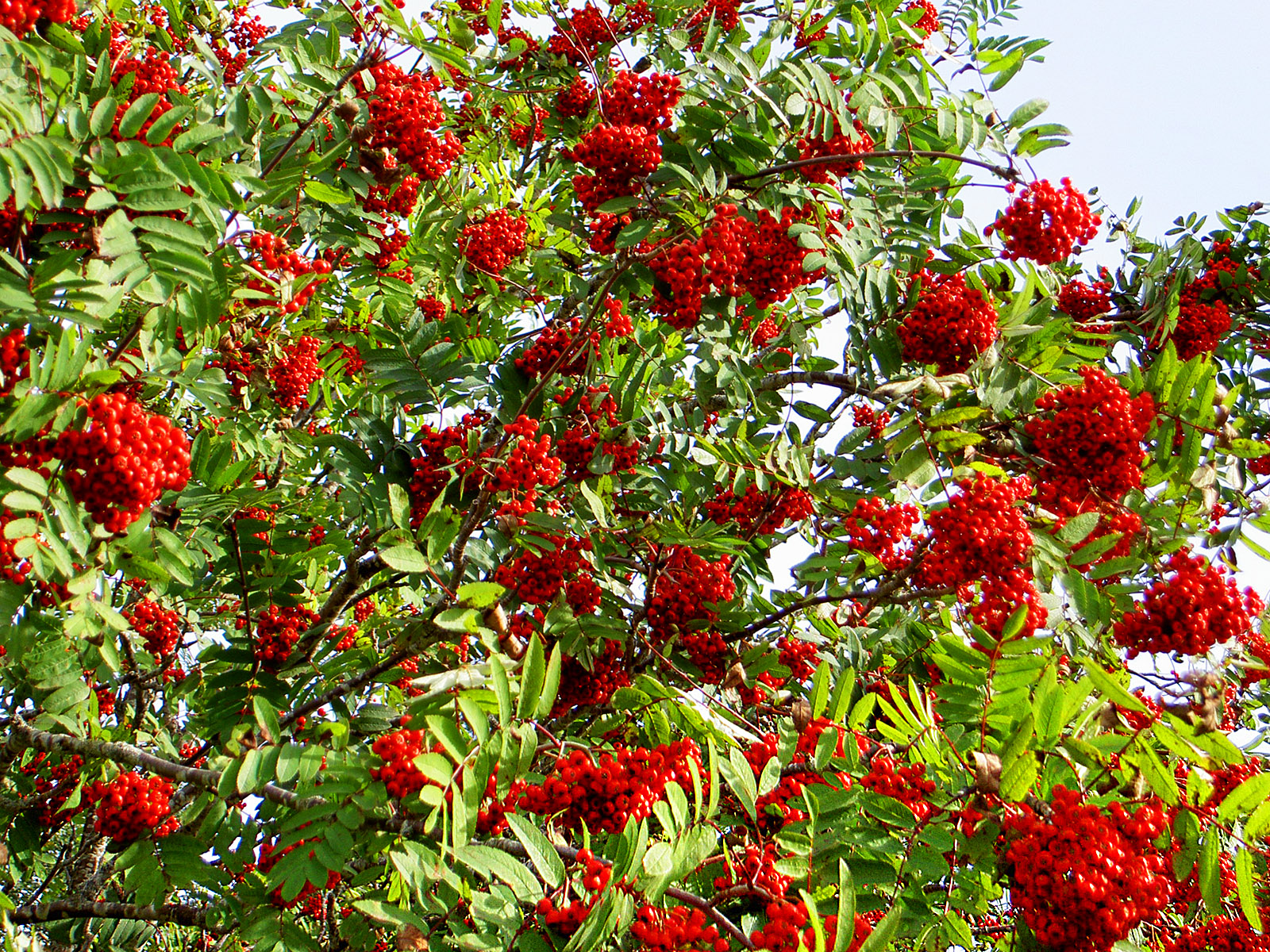
Berries of rowan (Sorbus acuparia). The amount vary from year to year and some years the branches are really bending down. They taste sour and bitter, but some make a jelly of them. The jelly is eaten in small quantities with meat and gravy dishes, notably venison: elk, reindeer, red deer, or roe deer. If we don't have this gel, we use a jam made of foxberries.
(2005-09-17)
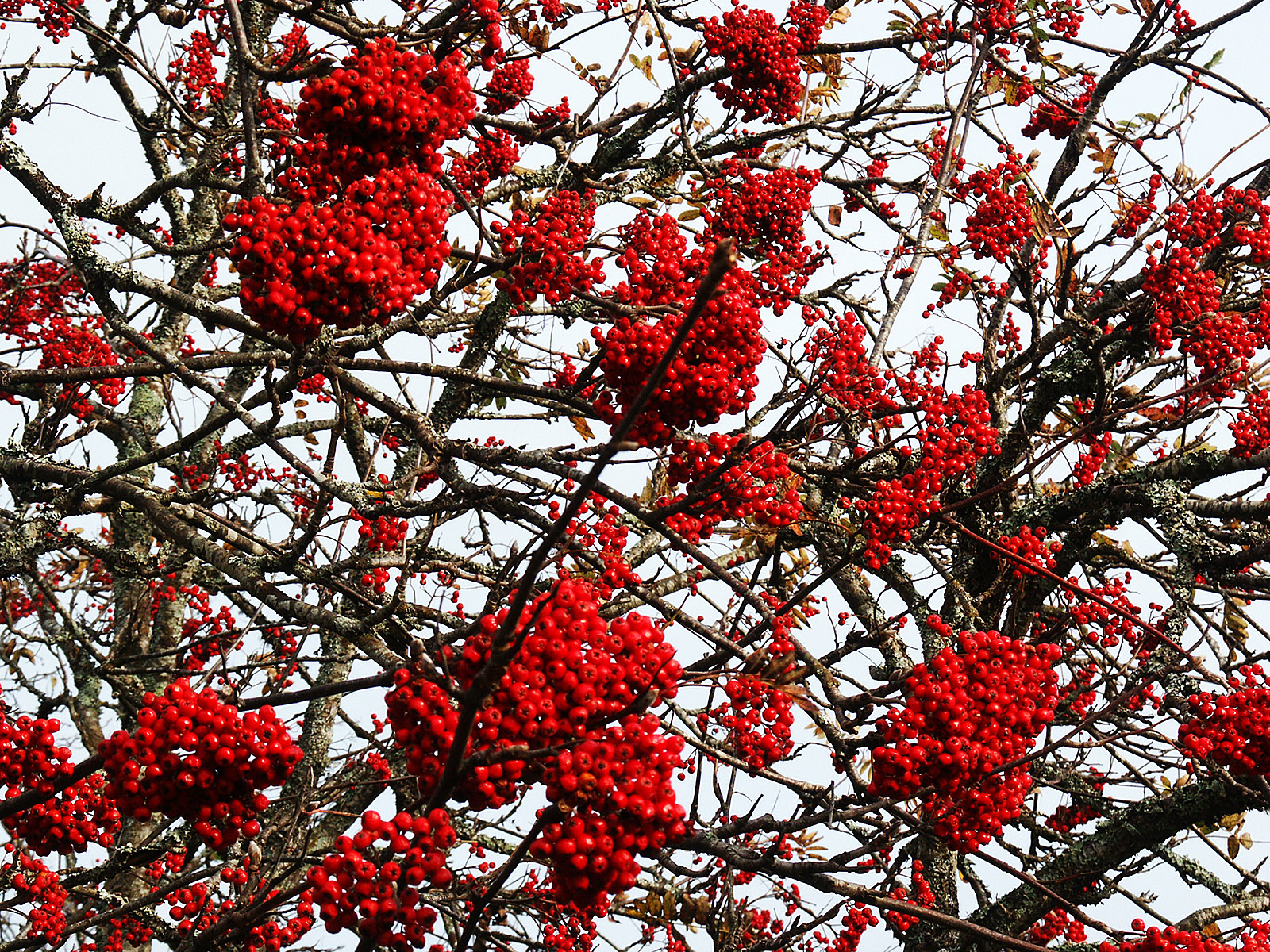
Some birds love the rowan berries, and let me mention a frequent visitor from Siberia, the beautiful and trusting waxwing (Bombycilla garrulus), which arrives in the autumn when there is not enough food (juniper berries!) back home.
(2005-10-15)
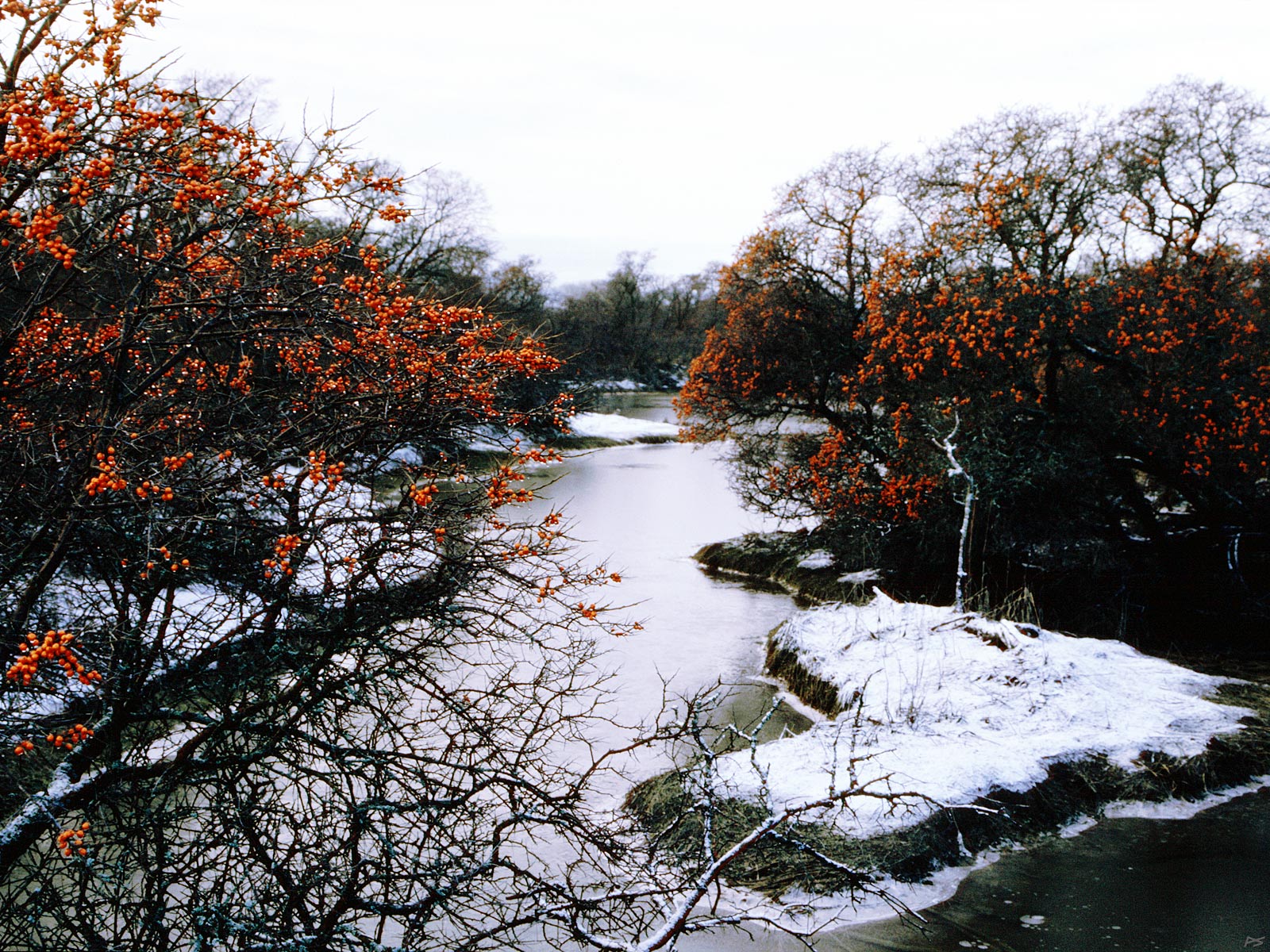
On Leinøra, on the south side of Trondheim, on the west side of the river Gaula where it flows into the sea, grows a forest of exceptionally tall Sea Buckthorn (Hippophaë rhamnoides). The image shows a lagoon of brackish water with new ice.
(1983-11-19)

Sea Buckthorn with berries. The taste of the berries is sour and resembles to some extent that of oranges. They are difficult to pick. The berries sit on very short stalks directly on branches and tends to be squashed making the fingers sour. They make a tasty juice, but I think it's not worth the trouble.
(2005-09-30)
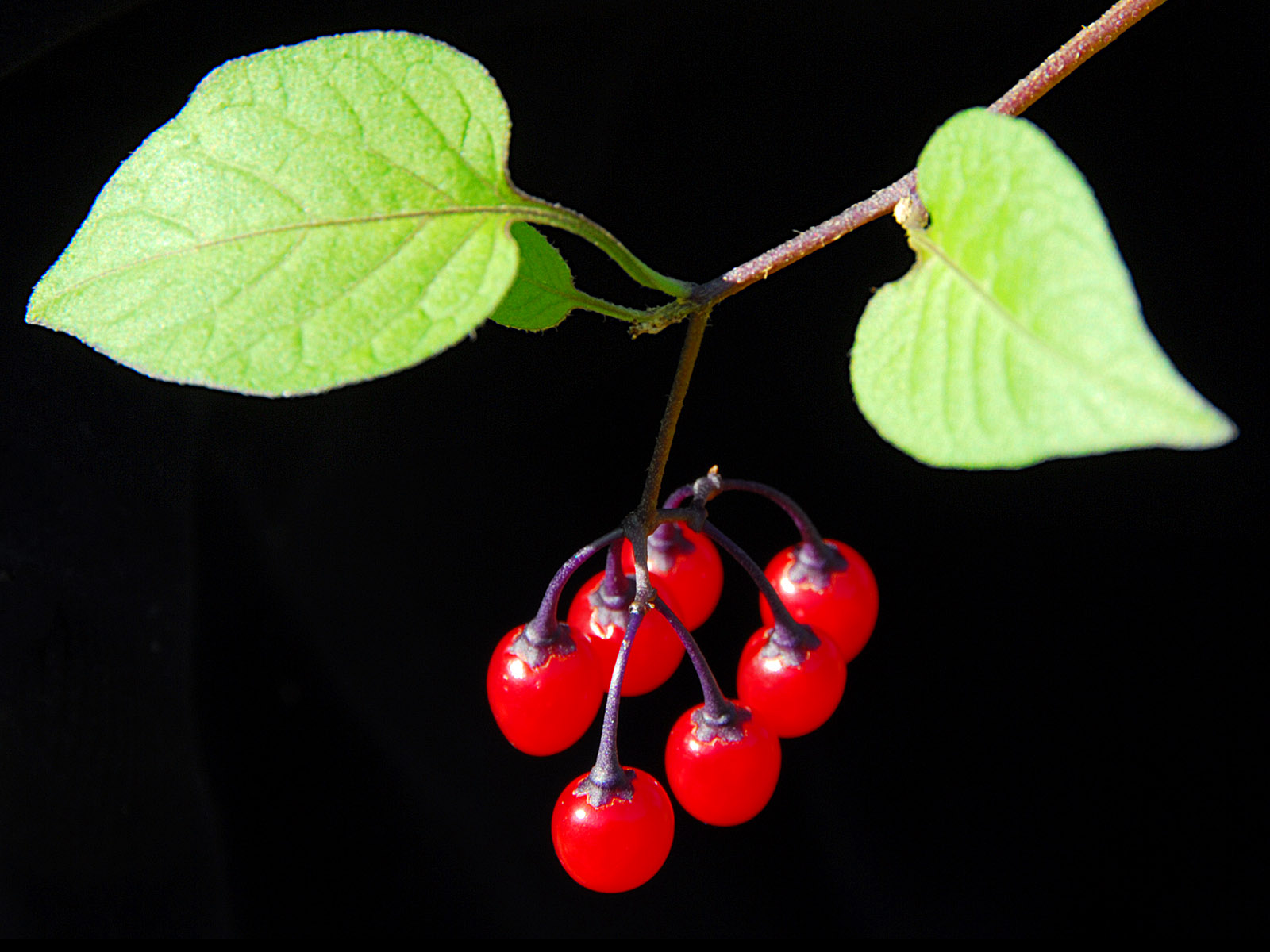
Bittersweet nightshade etc. (Solanum dulcamara) is a vine that isn't that common here in Trondheim, but on Leinøra, where the sea buckthorn grows (above), a few can be found. They are poisonous, especially the unripe, green berries are loaded with solanin. Since ancient times the plant has been used for medical and occult purposes, but now its relatives are more interesting, like the potato plant (Solanum tuberosum), the tomato plant (Solanum lycopersicum), and aubergine plant or eggplant (Solanum melongena), all containing solanin and other unhealthy stuff, except the parts we eat. However, don't eat to much potatoes that have turned green from exposure to sunlight.
(2009-09-14)
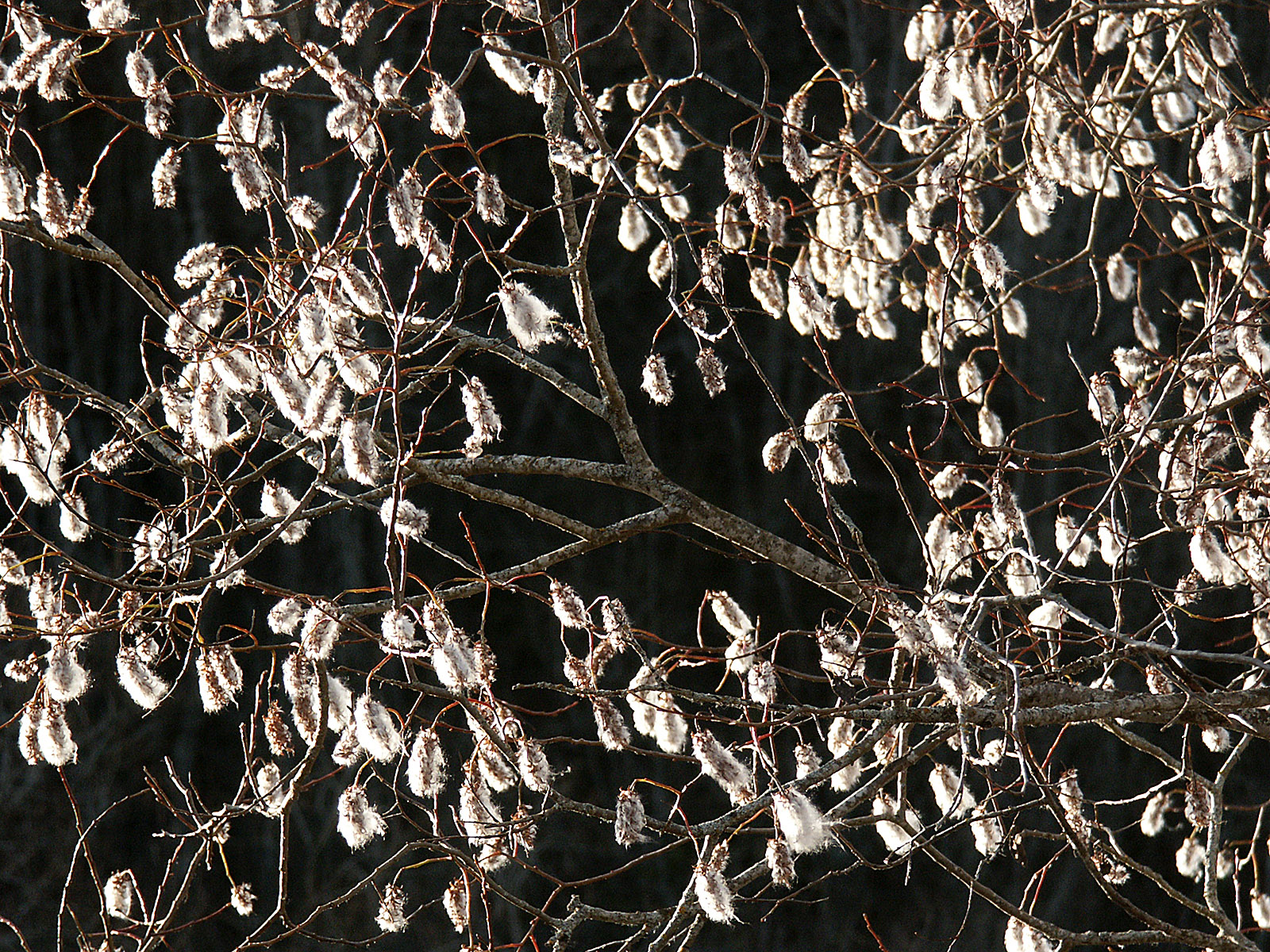
Bay willow or Laurel willow (Salix pentandra) flowers later than other willows and the seed capsules open in autumn and early winter. The fluff lets the wind carry the seeds away.
(2004-10-30)
